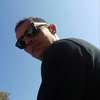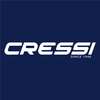UNDERWATER ANIMALS. “DEEP PELAGIC FOOD WEB STRUCTURE as revealed by ‘in situ’
feeding observations” – Proceedings of the Royal Society, London (a Fellowship of many of the world's most eminent scientists and the oldest scientific academy in continuous existence).
Food web linkages, or the feeding relationships between species inhabiting a shared ecosystem, are an ecological lens through which ecosystem structure and function can be assessed, and thus are fundamental to informing sustainable resource management. Here, using 27 years (1991–2016) of 'in situ' feeding observations collected by remotely operated vehicles (ROVs), we quantitatively characterize the deep pelagic food web of central California within the California Current, complementing existing studies of diet and trophic interactions with a unique perspective. 743 independent feeding events were observed with ROVs from near-surface waters down to depths approaching 4000 m, involving an assemblage of 84 different predators and 82 different prey types, for a total of 242 unique feeding relationships. The greatest diversity of prey was consumed by narcomedusae, followed by physonect siphonophores, ctenophores and cephalopods.







